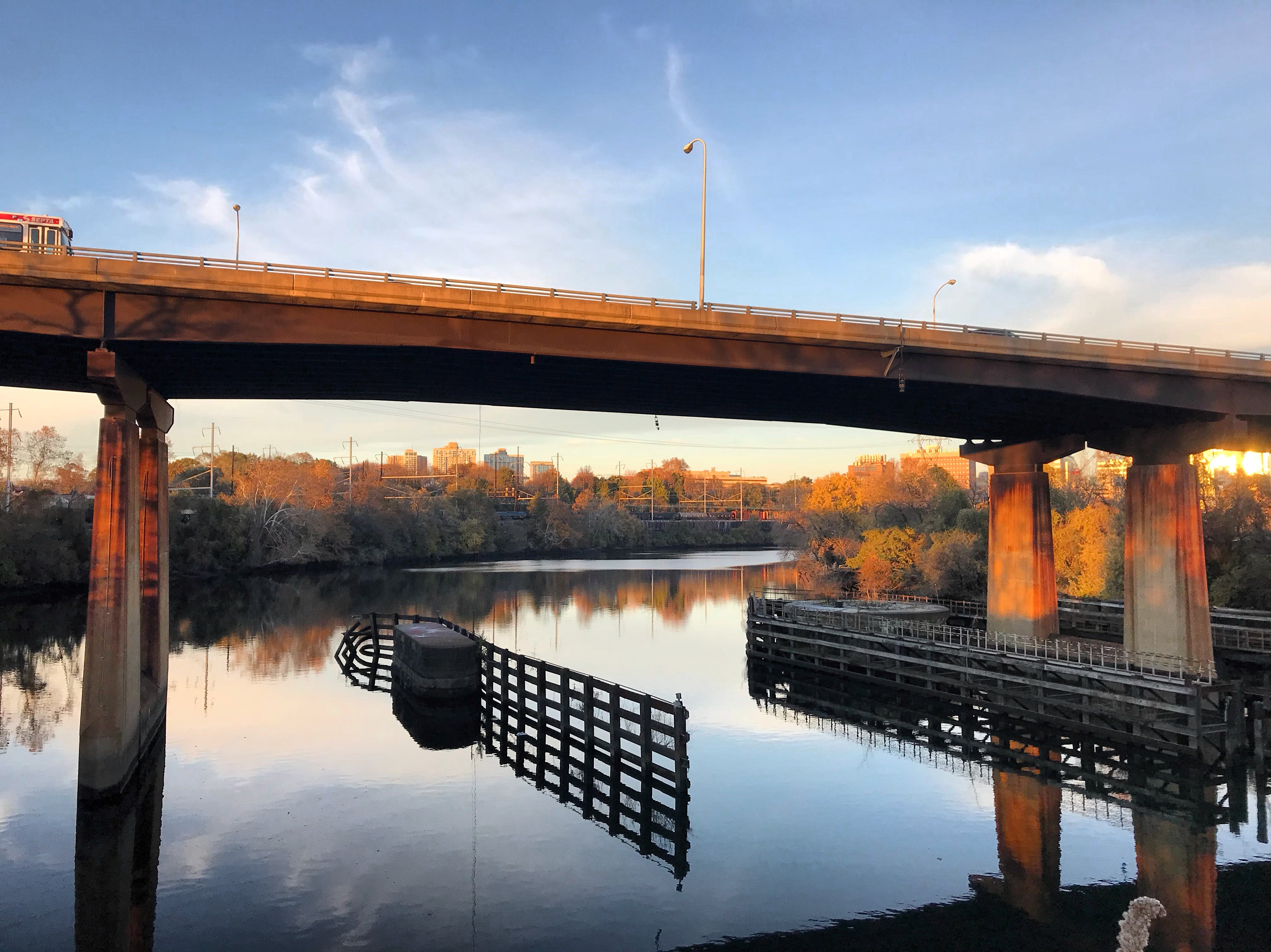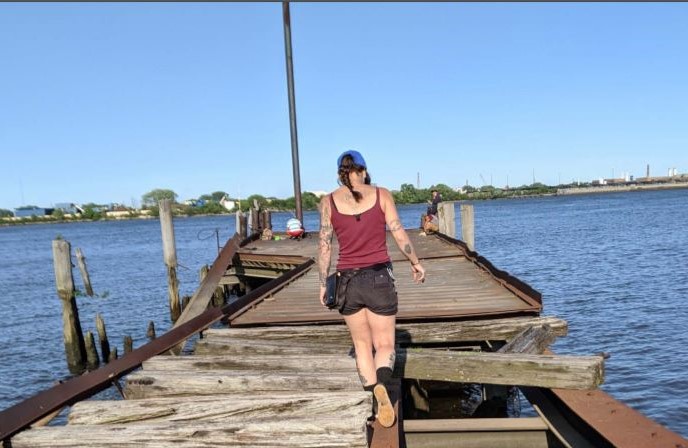Philadelphia: Urban Ecology and the Balance of Human and Ecological Communities

Oftentimes ecologists struggle to balance the needs of ecological communities (plants, wildlife, water, soil, air) and human communities (humans and their constructed environments) without recognizing the critical role of humans in the current landscape. Simultaneously, human communities often divorce themselves from nature and do not recognize the interconnectedness that exists even in urban areas. Even when the role of ecologists is to think systemically and examine the relationship between living organisms to one another and their physical surroundings, purist ecologists often get stuck on the negative impacts of humanity instead of viewing where the planet is on a larger evolutionary trajectory. This dichotomy impacts the equity of natural resources, especially in urban areas like Philadelphia. As climate change and social justice move to the forefront of collective consciousness, water arises as a crucial topic where humans and nature must learn to work together.
Philadelphia was built on historic wetlands and mudflats as a port city along the Delaware River. Eight watersheds cover the city: Delaware, Schuylkill, Wissahickon, Tookany/Tacony Frankford, Pennypack, Poquessing, Cobbs, and Darby. Until as recently as the 1970’s, the attitude towards wetlands was to fill them to create more “useful” development. This resulted in a 95% loss of freshwater tidal wetlands in the region. The loss of these wetlands meant a loss of their ecosystem services including buffering from flooding, retention of stormwater, carbon storage, wildlife habitat, and water filtration. Only quantified as ecosystem services in the last two decades, Philadelphia also lost access to cultural services of nature like recreation, spiritual, aesthetic, and educational benefits.
 In the attempt to subdue nature, a multitude of benefits were lost, and nature had a way of pushing back. A city of 1.6 million people significantly impacts the ecosystem in which it resides, but some neighborhoods are impacted more than others, especially areas of poverty. Some areas of the city are plagued by recurrent flooding, like Eastwick. Pollution and contamination make most water sources non-viable for swimming or more than recreational fishing and can cause illness during certain times of year, like Devil’s Pool in the Wissahickon. Climate change and sea-level rise flood projections estimate that much of the land adjoining the Delaware River will be under water within the next one hundred years. And when it comes to restoration, many state and federal regulations that were created with the best of intentions do not apply to heavily constructed urban environments and make restoration so difficult and expensive that developers and practitioners hesitate to take on mitigation or restoration projects leaving urban areas contaminated and fallow or open for more constructed development. Ecological restoration becomes an environmental justice issue as urban areas are excluded from the opportunity for environmental uplift.
In the attempt to subdue nature, a multitude of benefits were lost, and nature had a way of pushing back. A city of 1.6 million people significantly impacts the ecosystem in which it resides, but some neighborhoods are impacted more than others, especially areas of poverty. Some areas of the city are plagued by recurrent flooding, like Eastwick. Pollution and contamination make most water sources non-viable for swimming or more than recreational fishing and can cause illness during certain times of year, like Devil’s Pool in the Wissahickon. Climate change and sea-level rise flood projections estimate that much of the land adjoining the Delaware River will be under water within the next one hundred years. And when it comes to restoration, many state and federal regulations that were created with the best of intentions do not apply to heavily constructed urban environments and make restoration so difficult and expensive that developers and practitioners hesitate to take on mitigation or restoration projects leaving urban areas contaminated and fallow or open for more constructed development. Ecological restoration becomes an environmental justice issue as urban areas are excluded from the opportunity for environmental uplift.
So how do we restore functional ecology that supports the human community around it but can also survive the impact of the surrounding human community? How do we prioritize needs? In a time of limited resources, a growing population, and a 23.3% poverty rate, where do dollars get spent? Housing is an immediate need that cannot be overlooked, but should flood protection for that housing and quality of life for its inhabitants be sacrificed? The field of ecology itself lacks representation with the Ecological Society of America reporting 30% women and only 7% people of color participating. In a city that is 55.9% people of color and 53.5% female, is it surprising that ecologists are often unable to relate to the communities in which they are working and provide effective communication and desired outcomes?
 The word “access” is used frequently- educational access, economic access, job access, but also environmental access. The gap in environmental access means that the urban population has less exposure to the environment and therefore less opportunity to form an interest or passion. And even when they do, the compensation for environmental work is often significantly lower than other lines of work so anyone attempting class mobility or just looking towards survival may look towards other avenues. There is also the matter of safety and “ownership”. In the history of environmentalism, people of color were often told that they did not belong in natural spaces and continue to face racism at the worst and bias at the best when exploring the nature to which every human being is entitled. Until we view the intersectionality of environmental and social justice, we cannot understand a complete picture and cannot adapt to our present and future in this city and on this planet.
The word “access” is used frequently- educational access, economic access, job access, but also environmental access. The gap in environmental access means that the urban population has less exposure to the environment and therefore less opportunity to form an interest or passion. And even when they do, the compensation for environmental work is often significantly lower than other lines of work so anyone attempting class mobility or just looking towards survival may look towards other avenues. There is also the matter of safety and “ownership”. In the history of environmentalism, people of color were often told that they did not belong in natural spaces and continue to face racism at the worst and bias at the best when exploring the nature to which every human being is entitled. Until we view the intersectionality of environmental and social justice, we cannot understand a complete picture and cannot adapt to our present and future in this city and on this planet.
As a Philadelphia resident and naturalist, I struggle to find this balance but feel fortunate to have the opportunity to explore solutions in my work as an Ecologist for Resource Environmental Solutions and in previous work with organizations like the Partnership for the Delaware Estuary. Urban ecology often happens on a smaller scale than the thousand-acre parks or several hundred-acre mitigation banks that exist in other parts of the state, but every piece counts. Each wetland and floodplain that we restore provides an opportunity for ecological enhancement and an educational opportunity to shift the cultural paradigm towards a more sustainable future, a future where biologists value human life as much as wildlife and humans value wildlife and natural ecosystems.
This future involves public and private partnership, collaboration across all sectors, shared responsibility for the space that we inhabit, and the ability to view Philadelphia and the world in the short-term and the long-term. The human scale is so tiny compared to the timeline of Earth. Humans represent a small blip of existence with an enormous impact. It is a great privilege to exist but along with great privilege comes great responsibility. As we move forward as a city, it is important to continue this dialogue around water and natural resource equity and maintaining equilibrium between humans and the natural world.

